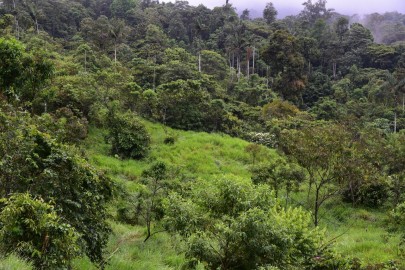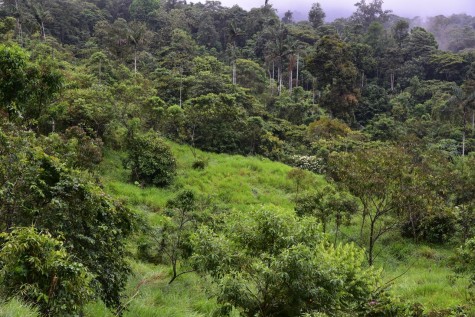Ants show how a rainforest is recovering
International research team led by TU Darmstadt studies complex ecosystems
2022/03/04
Can destroyed rainforests regenerate? This is the research focus of the “Reassembly” consortium funded by the German Research Foundation (DFG) and led by the Technical University of Darmstadt. Using ants as a case study, it is possible to assess whether and how well a rainforest can be restored after agricultural use. The results have now been presented in the international journal “Ecological Applications”.

Rainforests have a high potential to regenerate – a kind of natural self-healing after disturbances such as storms or fire. This repair even works after agricultural use. But what about the many smaller, yet important components of the complex rainforest ecosystem? Forest regeneration also involves the recovery of populations of dozens of mammal species, hundreds of bird species and thousands of insect species that contribute to or depend on forest growth.
The “Ecological Networks” lab at TU Darmstadt has now been able to measure the regeneration of ant communities in a rainforest in Northwest Ecuador for the first time. Philipp Hönle, a former doctoral student at the Department of Biology at TU Darmstadt, collected and identified 284 ant species on 61 study plots at different stages of regeneration as part of his recently completed doctoral thesis. Some of the species had been unknown to science and were recently described by Hönle and colleagues.
“The analyses show that communities of ant species on former pastures recover after about 29 years, in old cocoa plantations even after 21 years, and the species composition is then indistinguishable from old-growth forests in the area,” Hönle summarises his work. He and his colleagues were able to show the rapid recovery and resilience by various parameters, for example the distribution of functional traits of ant species. The study has now been published in the international journal “Ecological Applications”.
Kick-off for extensive research
The analysis of ant communities is the prelude to extensive research on the natural regeneration of complex species communities and food webs in the rainforest within the framework of the DFG research group “Reassembly”. Nico Blüthgen, Professor of Ecological Networks at the Department of Biology at TU Darmstadt, heads the Reassembly group, which focuses intensively on the interactions between animals and plants and the regeneration of disturbances in the rainforest of Ecuador. A new research station has been established for this purpose, which is also supported with funds from TU Darmstadt.
The Ecuadorian nature conservation organisation Jocotoco runs the station and the associated forest reserve. For more than 20 years, not only primeval forest areas have been purchased there, but also abandoned pastures and cacao plantations, which have since been regenerating at a very fast pace. As tropical forests are cut down at high rates, leaving only small remnants, newly growing secondary forests have now become very important for nature conservation.
The first scientific results show that the renaturation of forests can succeed – but only under certain conditions. “Such natural regeneration does not work when forests are industrially cleared and give way to large-scale cleared agricultural landscapes, as is unfortunately the case in many places,” says Blüthgen. New rainforests therefore need old rainforests in close proximity – as a reservoir for the thousands of species that contribute to regeneration. The research group will now investigate how this works in detail.
Publication
Philipp O. Hoenle, David A. Donoso, Adriana Argoti, Michael Staab, Christoph von Beeren, Nico Blüthgen: „Rapid ant community reassembly in a Neotropical forest: Recovery dynamics and land-use legacy“, Ecological Applications, e2559
doi.org/10.1002/eap.2559
Background: Project Reassembly
The Reassembly research unit examines the Chóco lowland rainforest in northwestern Ecuador, which has been heavily damaged by human activity, to investigate the regenerative capacity of former pasture and cacao plantations in a forest reserve. The project focuses on interaction networks between animal and plant species and their functions in recovering secondary forests. A major goal is to find out how disturbed ecosystems can recover. The spokesperson is TU Professor Nico Blüthgen. The research group is funded by the DFG. Locally, the consortium is supported by the non-profit foundation Jocotoco and two universities in the country. The foundation has been buying land in the region for 20 years, which is then left to natural regeneration.
Ecological networks/cst


